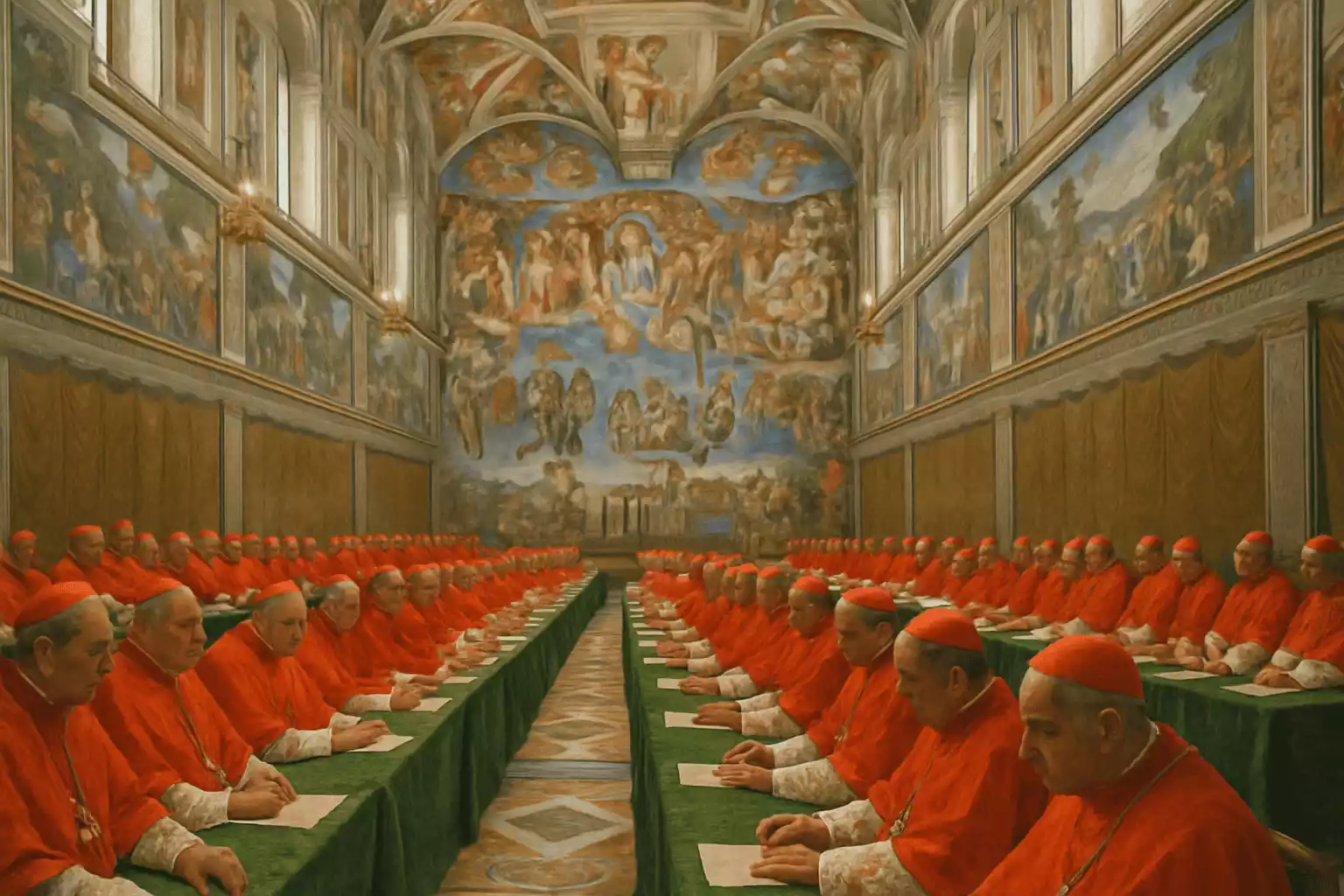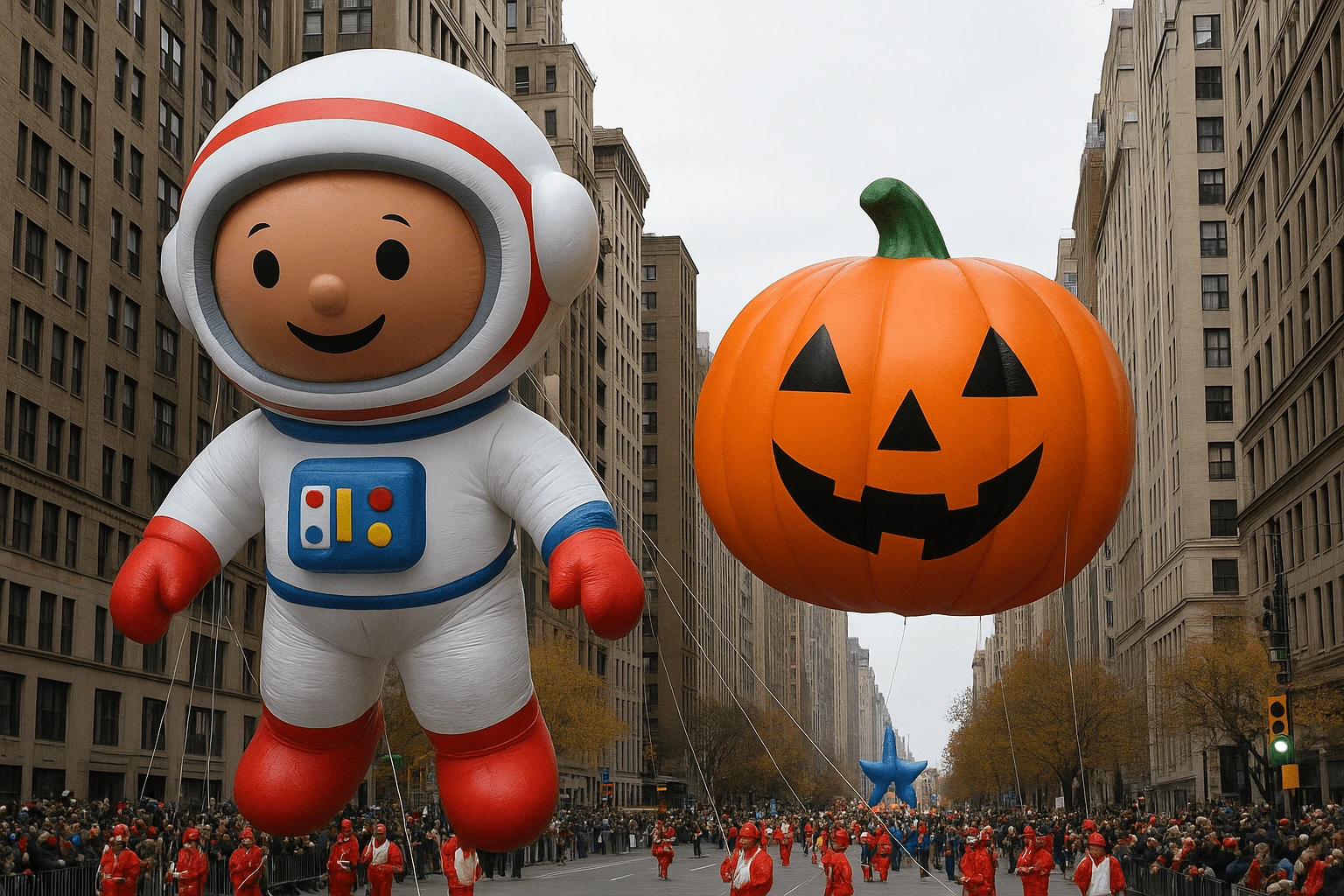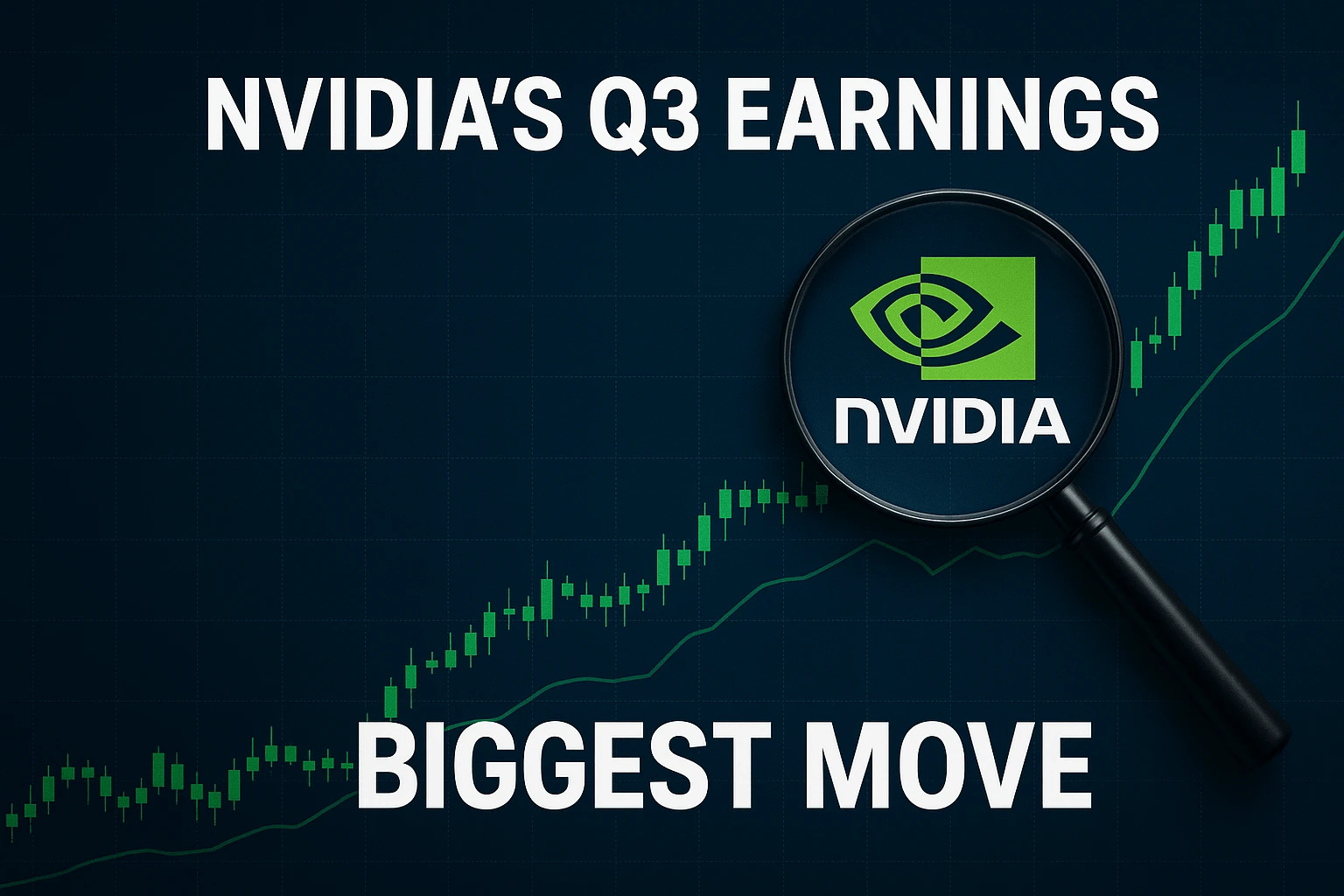📰 Vatican Secrets Revealed: What Is a Conclave and How Do Cardinals Elect a Pope?

🔍 Introduction of What is a conclave
Ever wonder how the world’s largest religious leader is chosen? The Vatican’s process of selecting a new Pope is filled with ancient rituals, strict rules, and mystery. Let’s peek behind the curtain and explore what happens during a conclave.
📜 What Is a Papal Conclave?
The term conclave is derived from the Latin phrase cum clave, which translates to ‘with a key.’ This is because when cardinals convene to elect a new pope,
The practice dates back to the 13th century when long delays in electing popes frustrated both clergy and royalty. They are kept in a secure area until a conclusion is made.
Secrecy has always been essential. The conclave is designed to block outside influence, politics, and distractions—just the cardinals, their prayers, and the Holy Spirit.
👨🦳 The Function of Cardinals in a Papal Conclave
The Function of Cardinals in a Papal Conclave: Voting is restricted to cardinals who are under the age of 80, which currently includes approximately 120 individuals from various countries worldwide. These are the senior-most church leaders, often archbishops or former Vatican officials.
Before the voting begins, they gather for meetings to discuss the church’s needs and pray for guidance.
📩 How Is a Pope Elected?
Everything begins with a Mass called “Pro Eligendo Papa” (For the Election of the Pope). The cardinals then process into the Sistine Chapel, where the real action happens.
Voting is done by secret ballot. Each cardinal writes the name of their preferred candidate on a slip of paper, folds it, and places it in a golden chalice on the altar.
After each round, the ballots are burned. Black smoke means no consensus yet. White smoke means—Habemus Papam! We have a Pope!
🖼 Inside the Sistine Chapel
The Sistine Chapel is not only a pinnacle of Renaissance artistry but also serves as the spiritual center for the most significant election within Catholicism. During the conclave, it’s transformed into a secure, silent, and sacred space.
Cardinals are not allowed to speak with anyone outside. No phones. No internet. Even the housekeeping staff takes oaths of secrecy.
🔒 Secrecy and Security Measures
This isn’t a casual vote—it’s sacred.
The Cardinals have committed to upholding strict confidentiality before they enter the conclave, ensuring that all discussions and deliberations remain private until the election of the new Pope is concluded. Any breach of this can result in excommunication.
The Vatican even installs special jamming devices to prevent electronic signals from getting in or out. Imagine an election so secret that not even Google could sneak in. (What is a conclave)
📰 Historical Conclaves That Made Headlines
- Longest conclave: In 1268, cardinals took three years to choose a pope!
- Shortest conclave: Pope Pius XII was elected in just a few hours in 1939.
- Most watched: The election of Pope Francis in 2013 attracted millions of live viewers across the globe.
Watch this behind-the-scenes YouTube explanation
🎉 Life After the Election
Once a candidate receives two-thirds of the vote, he’s asked if he accepts. Should he respond affirmatively, he selects a new name. The new pope then steps onto the balcony and blesses the world.
❌ Common Misconceptions About the Conclave
Many people think the Holy Spirit “picks” the pope. While spiritual guidance is vital, the cardinals use their wisdom and experience to choose someone they believe is best suited. (What is a conclave)
Also, technically, any baptized Catholic male can be elected pope—even a layman—but this hasn’t happened in centuries.
🎈 Fun Facts About Papal Elections
- The Pope wears a special white cassock, tailored in three sizes just in case!
- He picks a new name to symbolize a fresh mission.
- The conclave is so secretive that even the chimney used for smoke signals is specially designed to keep people guessing.
🤝 The Importance of Unity in the Church
The Pope serves not only as a leader but also as a unifying symbol for more than a billion Catholics around the globe. That’s why the conclave matters so much: it’s not just about politics, it’s about faith, direction, and healing.
📱 Vatican Innovations in Modern Elections
Although the Vatican is rich in tradition, it has adjusted to contemporary issues. Signal jammers, bug sweeps, and even biometric locks help keep conclaves secure.
Still, no computers are used for voting—just pen, paper, and prayer.
🌍 What the World Watches For
What is a conclave? Even non-Catholics tune in for papal elections. Why? The Pope often influences global conversations on morality, peace, and justice. It’s one of the rare events that blends religion, history, and humanity on a global stage.
✅ Conclusion
So, what is a conclave? It’s one of the world’s oldest and most spiritual elections, where ancient ritual meets modern-day significance. In a world hungry for meaning, the mystery and magic of a papal conclave continue to captivate.
🙋♀️ FAQs
Q1: Who is eligible to become Pope?
Any male who has been baptized as a Catholic is eligible to be elected as Pope, although it is customary for the position to be filled by one of the cardinals.
Q2: How long does a conclave usually last?
It varies, but most modern conclaves last just a few days.
Q3: Why is the Sistine Chapel used?
It’s secure, symbolic, and sacred—perfect for such an important decision.
Q4: Can women vote in a conclave?
Voting is restricted to male cardinals who are under the age of 80.
Q5: What happens if no Pope is elected?
They keep voting until someone receives two-thirds of the votes. It could take days—or even longer.



raf3h8
386zlr
testosterone and hgh
References:
hgh cycle dosage bodybuilding (https://Stackoverflow.qastan.be/?qa=user/clientcover3)
dosage of hgh
References:
hgh fat loss dosage (https://hedge.fachschaft.informatik.uni-kl.de/ZOAncqp3T7GbNELI5FY8nw/)
difference between testosterone and hgh
References:
Hgh steigern (decoyrental.com)
hgh erfahrung bodybuilding
References:
allmyfaves.com
hgh bijwerkingen
References:
http://volleypedia.org
side effects of hgh injections
References:
skitterphoto.com
ORBS Production https://filmproductioncortina.com is a full-service film, photo and video production company in Cortina d’Ampezzo and the Dolomites. We create commercials, branded content, sports and winter campaigns with local crew, alpine logistics, aerial/FPV filming and end-to-end production support across the Alps. Learn more at filmproductioncortina.com
شركة تسليك مجاري بالدمام
Хочешь развлечься? купить альфа пвп федерация – это проводник в мир покупки запрещенных товаров, можно купить гашиш, купить мефедрон, купить кокаин, купить меф, купить экстази, купить альфа пвп, купить гаш в различных городах. Москва, Санкт-Петербург, Краснодар, Владивосток, Красноярск, Норильск, Екатеринбург, Мск, СПБ, Хабаровск, Новосибирск, Казань и еще 100+ городов.
1win деньги 1win casino официальный
бонуси в казино бонуси казино
онлайн слоти ігрові слоти
онлайн ігри казино ігри онлайн казино
mostbet android mostbet
polis oyunlari
References:
https://www.san315.com/borispleasant
little creek casino
References:
https://australiaimmihome.com/read-blog/202_rated-and-reviewed.html
kensington security slot
References:
https://storiediviaggio.com/clay70b7547139
oregon casinos
References:
https://seferpanim.com/read-blog/45333_best-online-casinos-australia-top-aussie-gambling-sites-2025.html
online casino vegas
References:
https://slimly.site/marilynstjulia
новости беларуси граница новости спорта беларуси
Безопасный процесс авторизации вход на кракен требует решения TOTP кода из приложения аутентификатора и дополнительного PIN для критических операций на платформе.
Das nv casino bonus System gehört zu den großzügigsten auf dem deutschen Online-Glücksspielmarkt. Das nv casino bietet über die mobile App Zugang zu hunderten von Spielen, die speziell für mobile Geräte optimiert wurden. Nach erfolgreicher Registrierung erhalten neue Spieler Zugang zum attraktiven Willkommensbonus von bis zu 2.000 € plus 225 Freispiele. Nv Casino bietet ein riesiges Portfolio von Spielautomaten und Tischspielen, die von renommierten Anbietern wie NetEnt, Play’n GO, Evolution und BGaming bereitgestellt werden. Nv Casino ist ein innovatives Online-Casino, das deutschsprachigen Spielern ein hochwertiges Glücksspielerlebnis unter Einhaltung internationaler Sicherheitsstandards bietet.
Und das sind großartige Neuigkeiten für diejenigen, die aktiv spielen möchten. Bleiben Sie auf der Website und für das Erscheinen der Schaltfläche für die NVcasino download app auf dem Laufenden. Viele Nutzer fragen sich im Chat, ob es jetzt eine NV casino app gibt, mit der sie Automaten bequem von Smartphones aus starten können. Ja, schon in der ersten Phase wird es möglich sein, kleine Beträge zu spielen, einzahlen und sogar abzuheben.
References:
https://online-spielhallen.de/lex-casino-top-spielportal-in-deutschland/
Только лучшее здесь: https://medim-pro.ru/mezhdunarodnyj-privivochnyj-sertifikat-kupit
Free video chat emerald chat ios app find people from all over the world in seconds. Anonymous, no registration or SMS required. A convenient alternative to Omegle: minimal settings, maximum live communication right in your browser, at home or on the go, without unnecessary ads.
New in the Category: https://www.flowerdeliverybellgardens.com/kupit-akkaunty-tik-tok-s-podpischikami-ot-3-rublej-10/
Популярный kraken market darknet имеет развитую витрину топовых магазинов с верифицированными продавцами и специальными бейджами качества обслуживания.
Нужна работа в США? курс трак диспетчера онлайн в сша с нуля : работа с заявками и рейсами, переговоры на английском, тайм-менеджмент и сервис. Подходит новичкам и тем, кто хочет выйти на рынок труда США и зарабатывать в долларах.
Uwielbiasz hazard? nv casino: rzetelne oceny kasyn, weryfikacja licencji oraz wybor bonusow i promocji dla nowych i powracajacych graczy. Szczegolowe recenzje, porownanie warunkow i rekomendacje dotyczace odpowiedzialnej gry.
Must-Read Collection: https://angdesh.com/author/marladecote/
Your article helped me a lot, is there any more related content? Thanks!